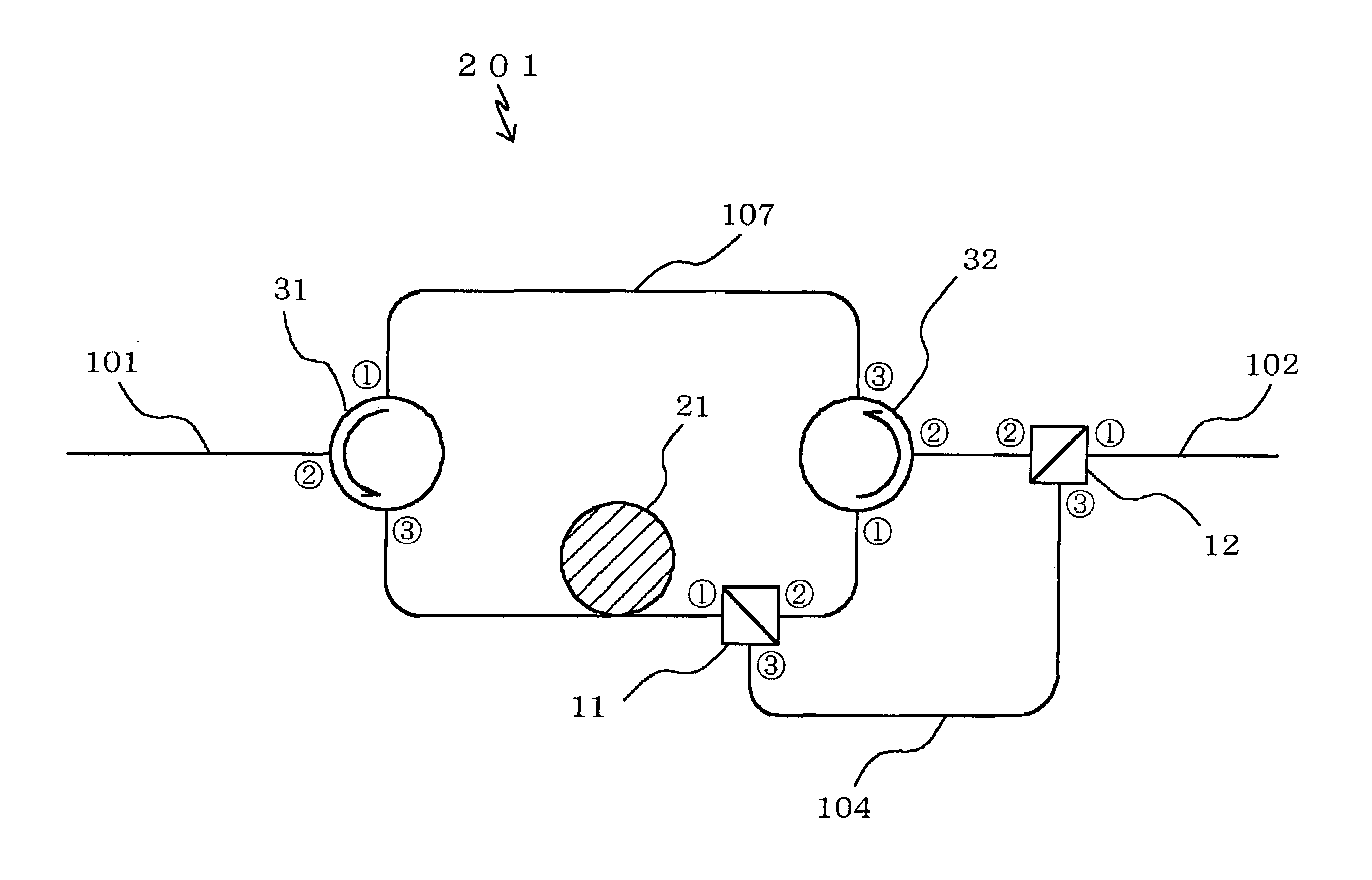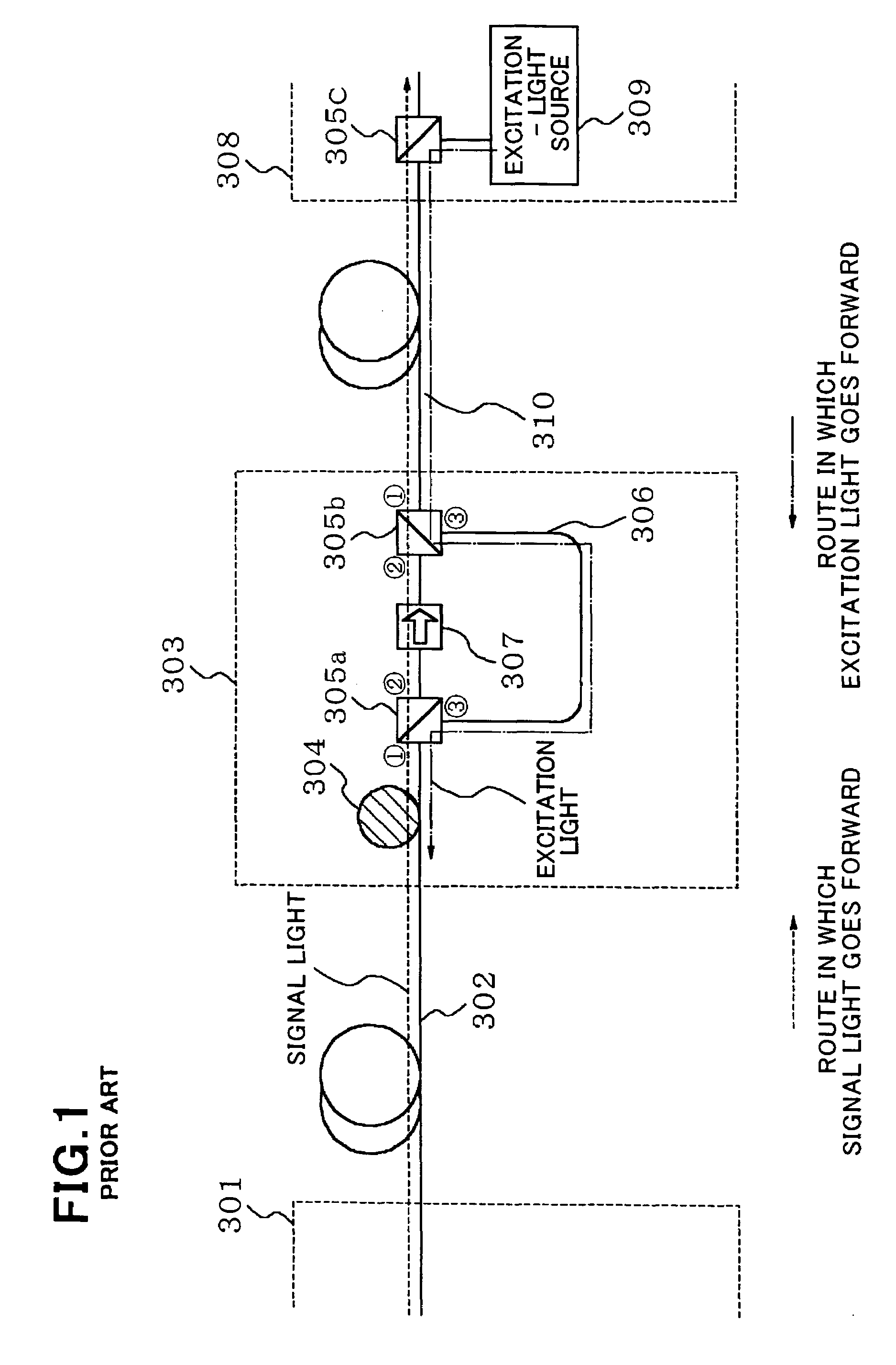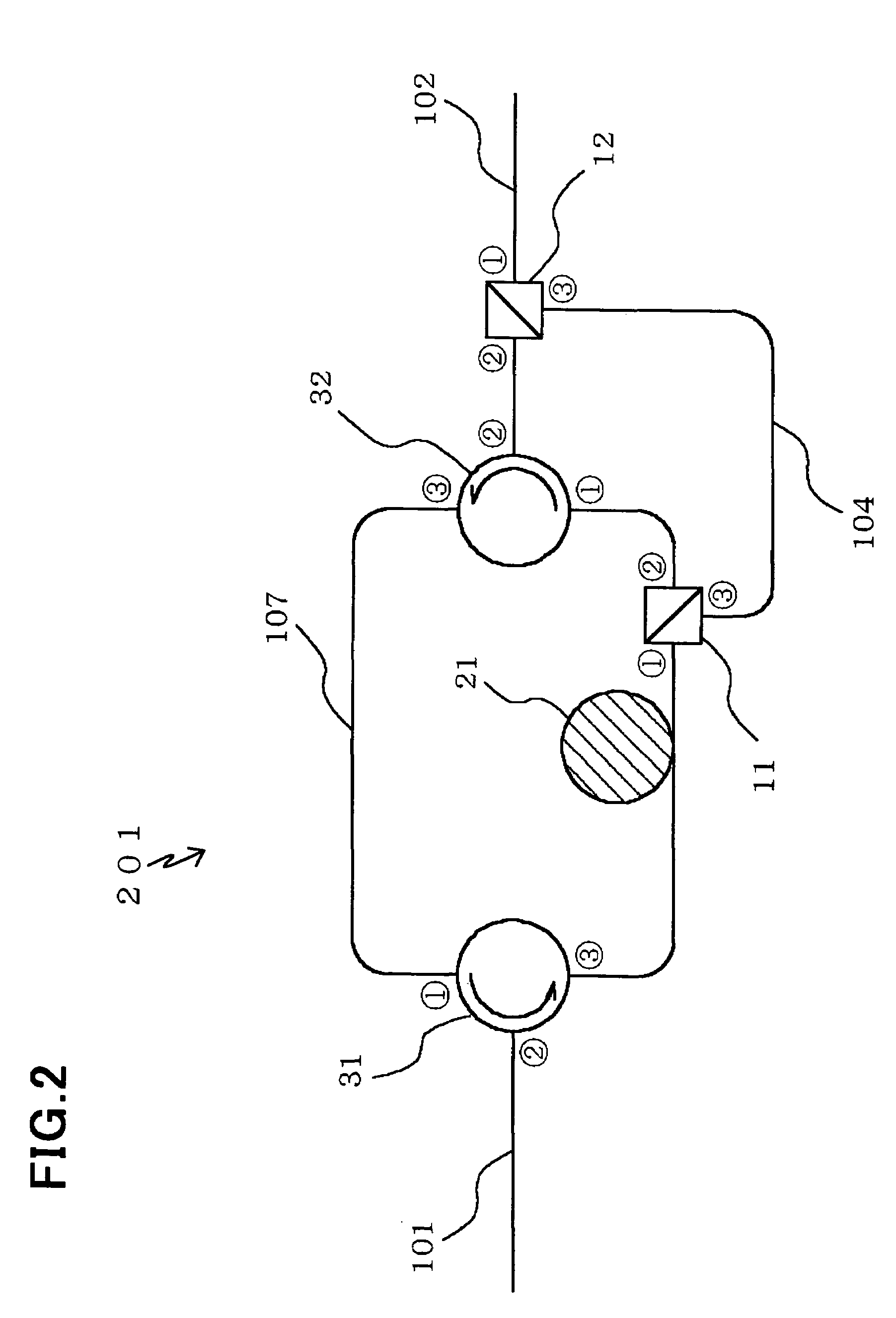Module for amplifying signal light with remote excitation-light and optical-fiber communication system including the same
a technology of excitation light and module, which is applied in the direction of electromagnetic repeaters, instruments, optical elements, etc., can solve the problems of affecting fabrication and running costs, affecting the arrangement of relays, and so much cost, so as to achieve the effect of gradually enhancing the performance of the module and the optical fiber communication system
- Summary
- Abstract
- Description
- Claims
- Application Information
AI Technical Summary
Benefits of technology
Problems solved by technology
Method used
Image
Examples
first embodiment
[First Embodiment]
[0076]FIG. 2 is a block diagram of a module 201 for amplifying a signal light with a remote excitation-light, in accordance with the first embodiment of the present invention.
[0077]The module 201 is comprised of a first optical input / output line 101 through which a signal light is transmitted, a second optical input / output line 102 through which a signal light is transmitted, an optical amplifier 21 which amplifies a signal light on receipt of an excitation light transmitted from an excitation-light source (not illustrated) through the second optical input / output line 102, a first bypass circuit 107 optically connected to later mentioned first and second optical connectors 31 and 32 to allow a signal light to bypass the optical amplifier 21, a first optical connector 31 which optically connects the first optical input / output line 101 to the optical amplifier 21, and further optically connects the first optical input / output line 101 to the first bypass circuit 107, ...
second embodiment
[Second Embodiment]
[0087]FIG. 3 is a block diagram of a module 202 for amplifying a signal light with a remote excitation-light, in accordance with the second embodiment of the present invention.
[0088]The module 202 is structurally different from the module 201 illustrated in FIG. 2 in that the module 202 includes third and fourth filters 61 and 62 in place of the first and second optical 3-port circulators 31 and 32, and that the module 202 further includes first and second isolators 63 and 64.
[0089]The first isolator 63 is located between the third filter 61 and the optical amplifier 21, and the second isolator 64 is located between the first filter 11 and the fourth filter 62.
[0090]The third filter 61 has first, second and third ports. The second port {circle around (2)} is a port through which a signal light comprised of a signal light having a first wavelength band and a signal light having a second wavelength band, combined to each other, is input and output, the first port {c...
third embodiment
[Third Embodiment]
[0097]A module having a function symmetrical with the function of the module 202 illustrated in FIG. 3 may be more effectively used than the module 202. In such a module, a light having a first wavelength band is transmitted in a fixed direction, whereas a light having a second wavelength band is transmitted in opposite directions. Such a module is explained hereinbelow as a module 203 in accordance with the third embodiment.
[0098]FIG. 4 is a block diagram of a module 203 for amplifying a signal light with a remote excitation-light, in accordance with the third embodiment of the present invention.
[0099]The module 203 is structurally different from the module 202 illustrated in FIG. 3 in port-arrangement in the third and fourth filters 61 and 62.
[0100]The third filter 61 has first, second and third ports. The second port {circle around (2)} is a port through which a signal light comprised of a signal light having a first wavelength band and a signal light having a s...
PUM
 Login to View More
Login to View More Abstract
Description
Claims
Application Information
 Login to View More
Login to View More - R&D
- Intellectual Property
- Life Sciences
- Materials
- Tech Scout
- Unparalleled Data Quality
- Higher Quality Content
- 60% Fewer Hallucinations
Browse by: Latest US Patents, China's latest patents, Technical Efficacy Thesaurus, Application Domain, Technology Topic, Popular Technical Reports.
© 2025 PatSnap. All rights reserved.Legal|Privacy policy|Modern Slavery Act Transparency Statement|Sitemap|About US| Contact US: help@patsnap.com



